Phil M Jones’ book, Exactly What to Say: The Magic Words for Influence and Impact provides readers with 22 magic words that can have a powerful impact on daily interactions with people, ultimately leading to the ability to turn situations in one’s favor. With a quick read of 150 pages, the book aims to delve deeper into influencing others, a topic numerous books have explored over the past century.
Dale Carnegie’s classic “How to Win Friends and Influence People” has been a perennial favorite since its publication almost a century ago. Many books have tried to uncover tips and tricks on influencing others since then. Robert Cialdini’s “Influence” is one of the most notable books in this category. However, Kurt Mortensen’s “Maximum Influence” and McKintosh & Luecke’s “Increase Your Influence at Work” have also had their fair share of admirers.
While these books have provided valuable insights, Phil M. Jones believes his book is much more practical, and readers will find it worth the investment. By focusing on just 22 magic words, Exactly What to Say provides readers with a concise guide to influencing others effectively. Jones’s book is an excellent addition to the collection of books on the topic and offers a unique approach to the subject.
According to the author, thinking about what you will say when you say it is not ideal. The author suggests using magic words to prepare for conversations and gain an advantage. These words are defined as words that speak directly to the subconscious brain. The subconscious brain is essential in decision-making because it makes decisions without overanalyzing them, similar to a computer with only “yes” or “no” outputs. It is decisive and quick, making it a powerful tool for influencing others.
In the book, Phil M Jones presents 22 magic words that readers can use to impact their daily conversations. These words include phrases such as “If I can, will you?”, “What would need to happen for…?”, “How did that make you feel?”, and “Just imagine…”. By using these magic words, readers can connect with the subconscious mind of others and influence their decision-making processes.
The author emphasizes the importance of using these words correctly and in the appropriate context. With practice, readers can master the art of using magic words and gain a significant advantage in nearly every conversation. Through this book, the author aims to equip readers with the tools they need to become more influential and successful personally and professionally.
1. I’m not sure if it’s for you, but…
The author suggests that using the phrase “I’m not sure if it’s for you, but…” is an effective way to introduce an idea to someone because it subconsciously communicates that there is no pressure or obligation to agree. The listener will interpret the statement as an invitation to consider the idea without feeling coerced.
For example, the author provides two examples of using this phrase:
- “I’m not sure if it’s for you, but this option is available for this week only, and I would hate for you to miss out.” In this scenario, the speaker presents an option that is time-limited, but they are not forcing the listener to take action. Instead, they express concern that the listener may regret missing out on the opportunity.
- “I’m not sure if it’s for you, but we have plans on Sunday, and if you’d like, you’re welcome to join us.” In this case, the speaker is inviting the listener to join them without making them feel obligated. By saying, “I’m not sure if it’s for you, but” the speaker is making it clear that they will not be offended if the listener declines the invitation.
This phrase subtly introduces ideas without making the listener feel pressured or obligated to agree. It can be a powerful tool for influencing others while maintaining a respectful and non-confrontational tone.
2. Open-minded
The author explains that our subconscious brain only operates in terms of “yes” and “no,” with no middle ground of “maybe.” As a result, people are more likely to answer “yes” to a question that frames them in a positive light, such as “Are you open-minded?” The author suggests that by starting a sentence with “how open-minded,” the odds of the listener agreeing with you increase from 50/50 to 90/10, as people are inclined to think of themselves as open-minded.
The following are examples of how to use this approach in a conversation:
- “How open-minded would you be about trying this as an alternative?” This sentence invites the listener to consider a new idea or suggestion. By starting with “how open-minded,” the speaker is framing the question positively, making it more likely that the listener will agree to try the alternative.
- “Would you be open-minded about seeing if we could work together?” In this case, the speaker asks the listener to consider a potential collaboration. By using the phrase “open-minded,” the speaker implies that the listener can be receptive to new ideas and possibilities.
Overall, by using the phrase “how open-minded,” the speaker can increase the likelihood of the listener agreeing to a proposition. This is because people generally like to think of themselves as open-minded and will be more receptive to ideas framed in a positive light.
3. What do you know?
Humans are wired to believe that they know best. It can be helpful to shift the other person’s position from certainty to doubt to take control of a conversation and direct it towards a specific outcome. The magic phrase “what do you know?” can be used for this purpose, which is why Socrates was renowned for his intelligence in Ancient Greece.
Here are some examples:
• Can you tell me what you know about the benefits of this product/service?
• Could you share your knowledge about the potential risks involved in this decision?
• What insights do you have about the current market trends in your industry?
• Do you have any information about the competition and its strategies?
4: How would you feel if?
Loss aversion is a powerful motivator that drives people to work harder to avoid potential losses than to achieve potential gains. To use this psychological phenomenon to your advantage, you can create a future scenario that triggers the appropriate emotions in your listener.
Here are some examples:
- Imagine how you would feel if you missed out on this opportunity. (The loss aversion trigger)
- How would you feel if you could achieve your goals with our product/service? (The “if-success” trigger; loss aversion in absentia)
5: Imagine
Humans have a natural inclination towards storytelling, and it has the power to inspire, influence, and persuade. Our brains are wired to create mental images when we listen to a story, and we enjoy being a part of the narrative. From an early age, we are drawn to the magic of “Once upon a time,” As adults, we respond to the phrase “Just imagine.”
Stories have been around for as long as humans have existed. They help us to understand our surroundings, relate to others, reflect on the past, and make decisions for the future. Whenever we make a significant decision, we imagine how our lives would look if we took a particular course of action.
When you want to influence someone’s decision, triggering their imagination can be powerful. By asking them to imagine a scenario where they have achieved success, you can encourage them to visualize a positive outcome. As Jones explains, “Just imagine” is a trigger phrase that opens up the image viewer in the subconscious brain, creating mental pictures of the scenario you are describing.
Next time you want someone to make a decision in your favor, try using the sentence “Just imagine [Fill in the blanks of what success will look like]” and see the impact it can have.
Examples
• Imagine how things will look six months after implementing this plan.
• Imagine the joy on your kids’ faces when they see you achieve this goal.
6: When would be a good time?
Time is one of the most valuable commodities in today’s world, and it can be difficult to find time for others and ourselves. However, to persuade someone to make time for your ideas, you must inspire them first. One effective way to do this is by asking, “when would be a good time?” This simple question implies that there must be an excellent time to discuss your ideas and encourages the listener to provide a specific time.
For example:
• When would be a good time for you to review this proposal?
• When would be a good time to discuss the project details?
By asking, “when would be a good time?” you’re showing that you respect the listener’s schedule and are willing to work around their availability. This can help build trust and increase their chances of making time for your ideas.
7: I’m guessing you haven’t gotten around to
It can be frustrating when someone promises to do something but hasn’t followed through after a certain period. You don’t want to be aggressive, but you still want to remind the person to follow through. A helpful tactic in this situation is to push for the adverse scenario and clarify that it’s the other person’s responsibility to fix the issue.
Examples:
• I’m wondering if there’s been any progress on reviewing the documents.
• I’m curious if you’ve had a chance to decide yet.
8: Simple Swaps
Small changes in wording can significantly impact how people perceive and respond to a message. For instance, replacing the statement “I’m blind: would you give me some money?” with “It’s a sunny day, but I can’t see it” has resulted in more positive outcomes. Similarly, you can use this tactic in your communications.
For instance, instead of ending a presentation with the common question, “Do you have any questions?” try asking, “What questions do you have for me?” This subtle shift in wording puts you in control of the situation and encourages the audience to ask questions rather than assuming they won’t have any. Doing so creates an atmosphere of engagement and interest, which can lead to more productive discussions and better outcomes.
9: You have three options
Limiting the number of options presented to someone can help simplify decision-making and avoid analysis paralysis. By offering just three possibilities and then asking the other person which option is easiest for them, you can help guide them toward a decision that works for both parties.
Examples
• Out of these three dates, which one works best for you?
• Here are three different pricing options for our product. Which one is most appealing to you?
• Of these three potential solutions to our problem, which one do you think would be the most effective?
10: There are two types of people in this world
Framing options within the “two types of people” narrative can effectively prompt a near-instant decision. This approach immediately captures the listener’s attention and engages them by making them wonder which category they belong to. According to Jones, “The second someone hears, ‘There are two types of people in this world,’ the little voice in their head immediately wonders which one they are, and they wait with bated breath to hear the choices.”
Here are some examples of how to use this approach:
- There are two types of people in this world: those who make things happen and those who watch things happen. Which one are you?
- There are two types of people in this world: those who take action and those who make excuses. Which one are you?
- There are two types of people in this world: those who live in the present and those who dwell on the past. Which one are you?
- There are two types of people in this world: those who embrace challenges and those who avoid them. Which one are you?
By framing options within the “two types of people” narrative, you can prompt your audience to decide quickly and effectively.
According to a common belief, persuading strangers to do anything is challenging because our evolutionary programming makes us inherently distrustful of those different from us. However, there is a simple technique that can help establish a closer connection with someone you don’t know well. By saying, “I bet you’re a bit like me,” you can create a sense of common ground that may make the other person more receptive to your words.
For instance, if you want to encourage someone to work harder, you might say, “I bet you’re a bit like me: you enjoy working hard now, knowing it will pay dividends in the future.” By highlighting the shared trait of valuing hard work, you can foster a sense of kinship with the other person and potentially influence their behavior.
Similarly, if you want to empathize with someone who seems busy and overwhelmed, you could say, “I bet you’re a bit like me: you’re a busy person constantly juggling to get everything done.” This acknowledges the challenges of managing a hectic schedule and creates a sense of understanding between you and the other person.
Overall, while it’s true that we may be predisposed to mistrust strangers, using the “I bet you’re a bit like me” technique can help break down barriers and foster a sense of connection with others. By highlighting commonalities and acknowledging shared experiences, we can build trust and potentially positively influence others.
11: If you then
As a child, you may have been familiar with the “if…then” sandwich technique, in which a consequence is paired with a desired outcome to encourage compliance. For example, “If you don’t tidy your room, then you’re going to be grounded for the weekend,” or “If you don’t eat all your dinner, then you’re not going to get any dessert.” This approach can effectively motivate people to act in a certain way, and now you can use it yourself, perhaps taking a page from your mother’s book.
For instance, if you want to encourage someone to try something new, you might say, “If you decide to give this a try, then I promise you won’t be disappointed.” This frames the potential positive outcome as a reward for taking a specific action, which may motivate the person to try something new.
Similarly, if you are seeking a job or opportunity and want to persuade someone to give you a chance, you could say something like, “If you give me a chance in the role, I am confident you will thank me later.” This implies a potentially positive outcome for the person who gives you the opportunity, which could motivate them to take a chance on you.
In summary, using the “if…then” sandwich technique can effectively encourage action or persuade others. Pairing a desired outcome with a consequence can motivate people to take a specific action. You can create a sense of positive anticipation by positioning the desired outcome as a reward.
12: Don’t worry
When faced with a high-stress scenario, remaining calm and reassuring others that everything is under control can be challenging. However, a simple phrase can be very effective in conveying confidence and calmness: “Don’t worry.”
For instance, if you lead a high-pressure project and your team members feel anxious, you might say, “Don’t worry. You’re bound to be nervous right now.” This acknowledges their concerns while reassuring them that you are in control and confident in the outcome.
Similarly, if you are helping someone prepare for a high-stakes presentation or performance, you could say, “Don’t worry. I felt just the way you felt before I started, and look at me now.” This acknowledges the person’s anxiety while providing a positive example of someone who overcame similar nerves and succeeded.
Overall, “Don’t worry” can be a powerful tool for managing stress and instilling confidence in others. By conveying a sense of calmness and control, you can help others feel more at ease and focused on the task at hand.
13: Most people
Many people fear being isolated or different from others, so appealing to their sense of conformity can effectively get their attention and persuade them to take action. One way to do this is by emphasizing that what you ask them to do is what most people would do in the same situation.
For example, if you are helping someone fill out forms or complete a process, you could say, “What most people do is complete the forms with me here today. Then, you receive your welcome pack, and we get you booked for a launch.” By emphasizing that this is a typical and expected process, you may make the person feel more at ease and willing to comply.
Similarly, if you present someone with an opportunity or offer, you might say, “Most people in your circumstances would grab this opportunity with both hands, knowing there is almost no risk.” This appeals to the person’s sense of conformity by suggesting that others in similar situations have already taken advantage of the opportunity.
In summary, emphasizing that what you ask someone to do is what most people would do can effectively persuade them to take action. By appealing to their sense of conformity, you may be able to overcome any hesitations or fears they may have and encourage them to move forward.
14: The good news
In movies, it’s common to see a pattern where bad news is followed by good news, and even if the good news is not as significant, it still brings relief. This formula can also be effective in real life, especially when delivering news to others. People crave positivity and good news, so “The good news is…” can be a powerful way to infuse positivity into any situation.
For example, if someone has received bad news about a medical condition, you might say, “The good news is that there are treatment options available, and we can work together to find the best one for you.” This acknowledges the seriousness of the situation while also providing a glimmer of hope and a positive path forward.
Similarly, if you are delivering news about a project or goal, you might say, “The good news is that we are ahead of schedule, and it looks like we will be able to finish early.” This emphasizes the positive progress made and provides motivation for continued success.
The phrase “The good news is…” can be a powerful tool for infusing positivity and hope into any situation. Whether it follows lousy news or not, it can help people focus on the positive aspects and move forward with renewed energy and enthusiasm.
15: What happens next
When conversations come to a halt due to indecisiveness, asking simple and easy-to-answer questions to move the conversation forward can be helpful. As the saying goes, “the easier the question, the easier you gain your decision.”
To keep the conversation moving, you might say, “What happens next is we’ll try to fill out your details; Like: In terms of registering your details, what is the best address for you?” This question is specific, easy to answer, and provides a clear next step for the conversation.
By asking simple questions that require straightforward answers, you can help your conversation partner feel more confident and engaged in the discussion. This can be particularly helpful when making decisions or moving a conversation toward a specific goal or outcome.
In summary, when conversations become indecisive or come to a halt, asking easy-to-answer questions can be an effective way to keep the conversation moving and help your partner feel more engaged and confident in their responses.
16: What makes you say that?
When faced with indecisiveness, objections, or protests, it’s important not to respond with a counterargument. Instead, taking an inquisitive approach can help you better understand the customer’s concerns and find a way to address them.
For example, if a customer says, “I need to speak to somebody else before I decide this,” you might respond by saying, “What makes you say that?” This question can help you understand the customer’s reasoning and address any concerns they may have about the product or service.
Similarly, if a customer says, “I don’t have all the money right now,” you might respond by asking, “What makes you say that?” This question can help you understand whether the customer is concerned about the price or if other factors are at play, such as a need for more information or a desire for a different payment plan.
By taking an inquisitive approach, you can better understand the customer’s concerns and work together to find a solution that meets their needs. This approach can help build trust and rapport with the customer, ultimately leading to a more successful outcome for everyone involved.
17: Before you make your mind up
Moving from a “no” to a “yes” can be difficult, but moving from a “no” to a “maybe” and then from a “maybe” to a “yes” is more achievable. One way to do this is by using the phrase “before you make your mind up,” which can encourage the other person to reconsider their decision.
For example, if someone has said “no” to a proposal or idea, you might say, “Before you make your mind up, let’s ensure we’ve looked at all the facts.” This statement acknowledges the person’s recent decision and invites them to revisit the issue and consider any new information or perspectives.
By using this approach, you may be able to shift the person’s perspective from a hard “no” to a more open-minded “maybe,” which could eventually lead to a “yes.” It’s essential to approach the situation with empathy and understanding and a willingness to address any concerns or objections the person may have.
18: If I can, will you?
The “If I can… will you?” question is a powerful tool to remove objections and barriers to agreement. It allows you to make a conditional offer that requires the other person to commit to a positive response if you can meet their condition. Here are some more examples:
- If I can provide you with a detailed proposal by the end of the week, will you be willing to consider our services?
- If I can guarantee that the project will be completed on time, will you be willing to increase our budget?
- If I can demonstrate that our product meets your requirements, will you be willing to sign a contract with us?
Using this question, you can turn a “no” or an objection into a conditional agreement, which can help move the conversation toward a positive20: Enough.
Yes, that’s right. This is an example of the influence of suggestion, a powerful tool in decision-making. In this case, the suggestion of “enough” directs the decision toward the middle ground, making it easier for the person to decide. This technique can be applied in various situations, such as negotiations, sales, or personal relationships. You can influence decisions toward a desirable outcome by suggesting options that suit the other person’s needs, preferences, or beliefs.
19: Could you do me a small favor?
Here are some examples of how to use this technique:
• “Perhaps you could do me a small favor and lend me your pen for a moment?”
• “Would you mind doing me a small favor and holding the door open for me?”
• “Can I ask you to do me a small favor and let me know when the meeting is scheduled?”
Remember that the key to success with this technique is to ask for a small favor the other person will likely grant.
20: Keep it simple
It’s essential to recognize when your audience wants the details and when they don’t. In situations where they don’t, it’s best to avoid overwhelming them with the information they don’t need. Instead, use a concise statement to get to the point and convey the most critical information.
Examples:
• “The bottom line is that our product will help you save money on your energy bills.”
• “What you need to know is that our service will provide you with a reliable and efficient solution to your problem.”
That’s a great point. Keeping things simple and focusing on the desired outcome can make a big difference in influencing decisions. It’s important to understand that people are often driven by emotions rather than logic, so emphasizing how your solution addresses their problem and makes them feel can be more effective than bombarding them with technical details.
Conclusion
Influencing others can be challenging, but it is possible to sway their decisions in your favor with the right approach. One effective way to do this is by starting with a question that appeals to their desire to be open-minded. Phrases like “How open-minded are you?” can naturally draw people towards supporting your ideas. It’s essential to avoid using phrases that imply the other person has a choice in whether or not to consider your proposal, such as “When would be a good time too?” Instead, use phrasing that puts you in control, such as “What questions do you have for me?”
Another helpful technique is to preface your statements with “The good news is,” which can create a positive outlook and help to dispel any negative energy. Remember that people tend to make decisions based on emotions first and logic second, so it’s crucial to keep your answers high-level and focused on the outcome you’re trying to achieve.
Seth Price, the bestselling author of The Road to Recognition, has praised the book Exactly What to Say as a “masterclass in the art of influence, persuasion, and generating top-producing business results.” Whether you’re a beginner looking for an introduction to persuasive language or an expert seeking a refresher, this book is a must-read for anyone looking to improve their ability to influence and persuade personally and professionally.
Exactly What to Say Book Review
In “Exactly What to Say,” Phil M. Jones provides readers with an insightful guide on persuasive communication. This concise and practical book is packed with valuable tips and techniques to help navigate conversations effectively in personal or professional settings.
Jones shares a collection of “magic words” that have the potential to influence others and improve the outcomes of our interactions. These phrases are easy to understand and implement, making them accessible to anyone looking to enhance their communication skills. Each chapter focuses on a specific phrase, explaining its purpose and providing real-life examples of how it can be used.
What makes this book stand out is its simplicity and direct approach. Jones doesn’t waste time with unnecessary jargon or complex theories; instead, he presents actionable advice that can be applied immediately. This makes “Exactly What to Say” a quick and enjoyable read, perfect for busy individuals who want to see results without investing significant time.
In conclusion, “Exactly What to Say” is an excellent resource for anyone looking to improve their persuasive communication skills. Phil M. Jones delivers a powerful and practical guide that can have a lasting impact on both personal and professional relationships.
Our summaries are also available on all Podcast platforms, named “Kitabein,” which recently won India’s best educational podcast award.
Contents

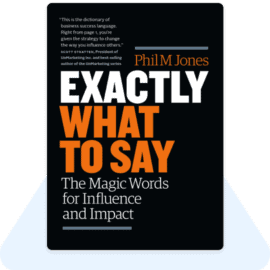
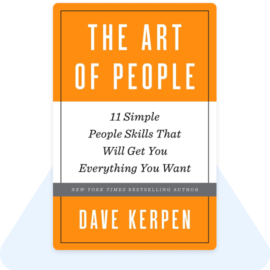


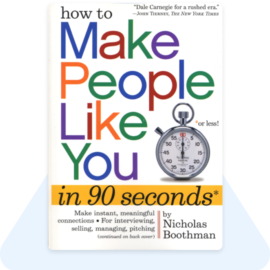

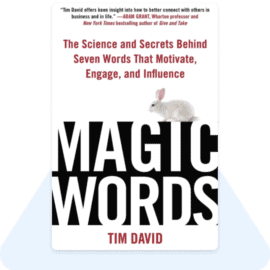
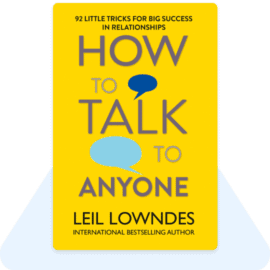
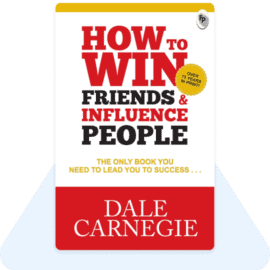

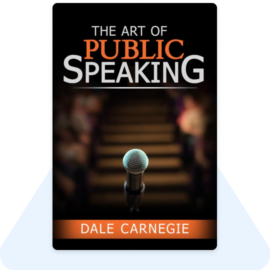
07-02-2023-Exactly what to say Book Key Learnings:
Keep it simple, solve what is logical, not emotional
If I can, will you?
Small favour
Decision-Making Skills
Thank you, Amit sir
Thnku for this book
summary date 15 Feb done
Day 7 – 28 Days Reading Challenge
Remember that people make decisions based on feelings, with logic coming second
DAY 7/28 Reading Challenge :
=======================
Take ways :
1, Use Magic Words :Magic Words are sets of words that talk straight to the subconscious brain.2.Just Imagine : The subconscious brain kicks a switch and opens up the image viewer, and it cannot help but picture the very scenario you are creating”.
Practice your magic words daily. Try them out on different people and in different situations.
Reality ye chhote soft skills hamare bhut kaam ke hai .